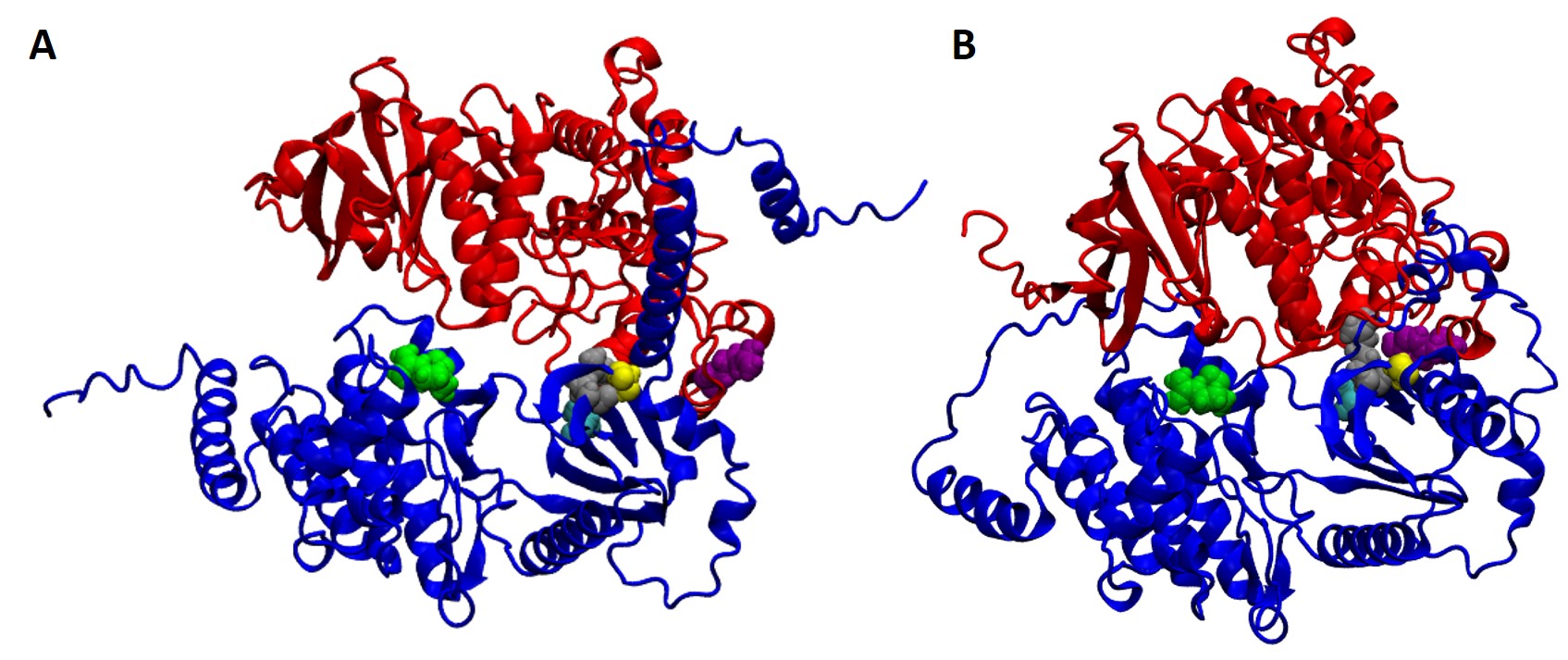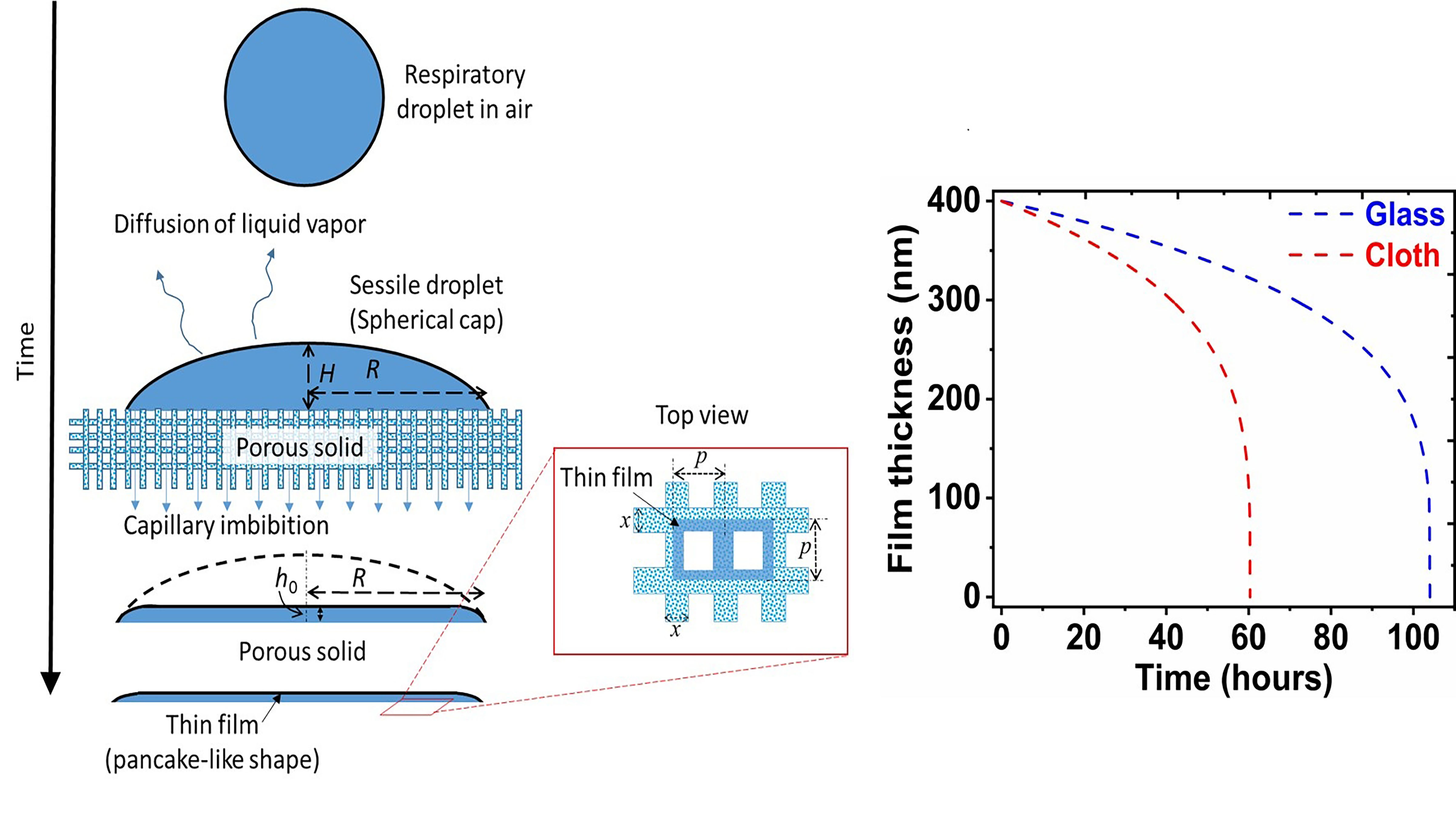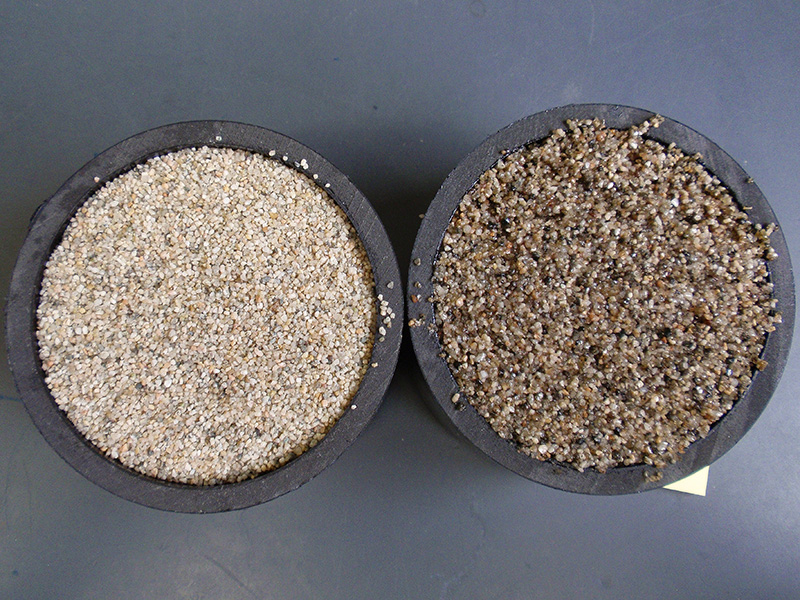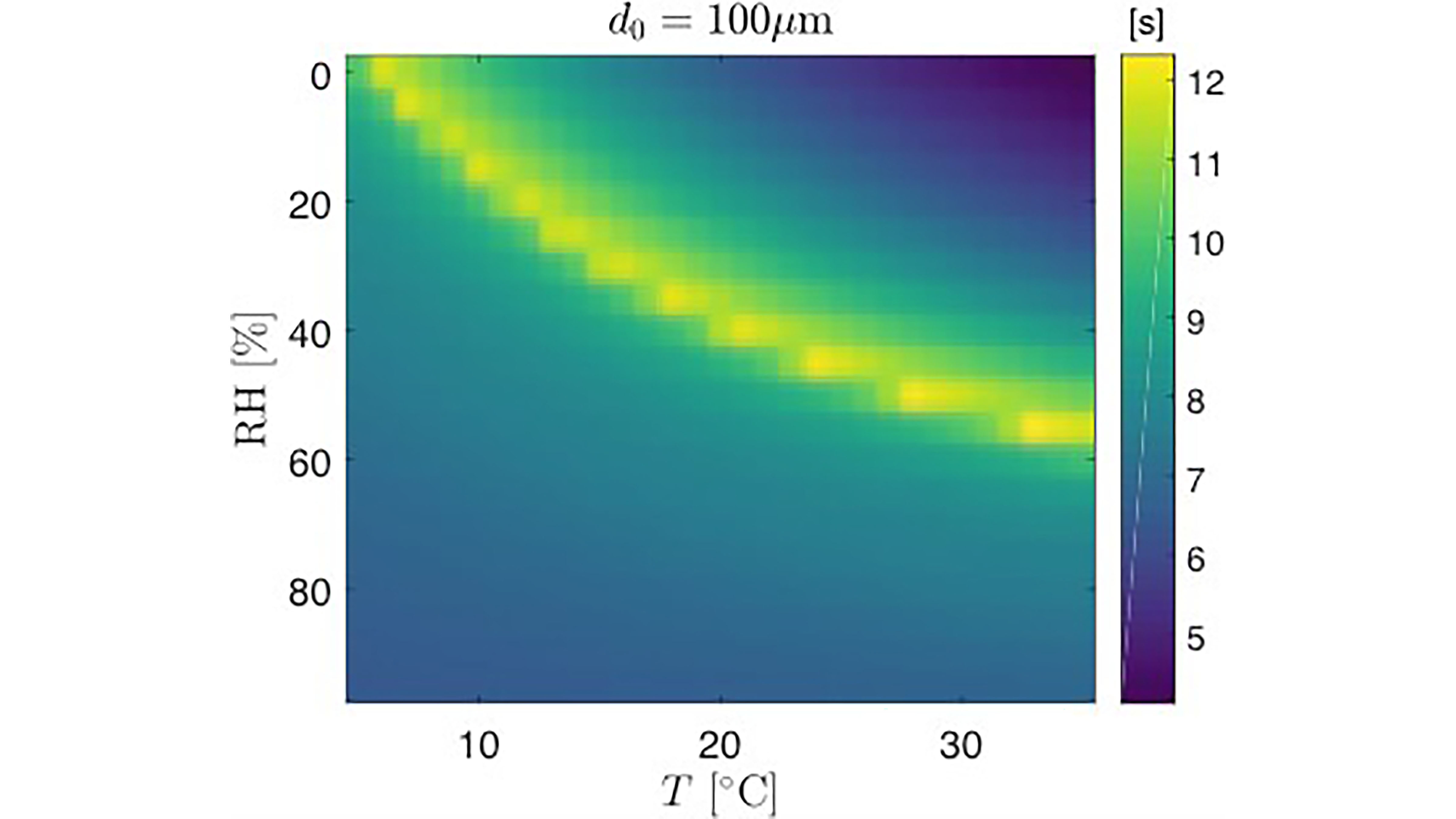Evaporation is happening all around us all the time, from the sweat cooling our bodies to the dew burning off in the morning sun. But science’s understanding of this ubiquitous process may have been missing a piece all this time.
Tag: Evaporation

Researchers Identify Elusive Carbon Dioxide Sensor in Plants that Controls Water Loss
UC San Diego scientists have identified a long-sought carbon dioxide sensor in plants, a discovery that holds implications for trees, crops and wildfires. The researchers found that two proteins work together to form the sensor, which is key for water evaporation, photosynthesis and plant growth.

Porous Materials Unfavorable for Coronavirus Survival
As COVID-19 spreads via respiratory droplets, researchers have become increasingly interested in the drying of droplets on impermeable and porous surfaces; surfaces that accelerate evaporation can decelerate the spread of the virus. In Physics of Fluids, researchers show a droplet remains liquid for a much shorter time on a porous surface, making it less favorable to survival of the virus. On paper and cloth, the virus survived for only three hours and two days, respectively.

First look at a sustainable agricultural mulch
Sand particles coated in oil could help farmers hold more moisture in the soil

Humid Air Can Extend Lifetime of Virus-Laden Aerosol Droplets
The novel coronavirus that causes COVID-19 is thought to spread through natural respiratory activities, but little is known about how the virus is transported through the air. Scientists report in Physics of Fluids on a study of how airflow and fluid flow affect exhaled droplets that can contain the virus. Their model includes a more accurate description of air turbulence that affects an exhaled droplet’s trajectory. Calculations with their model reveal, among other things, an important and surprising effect of humid air.